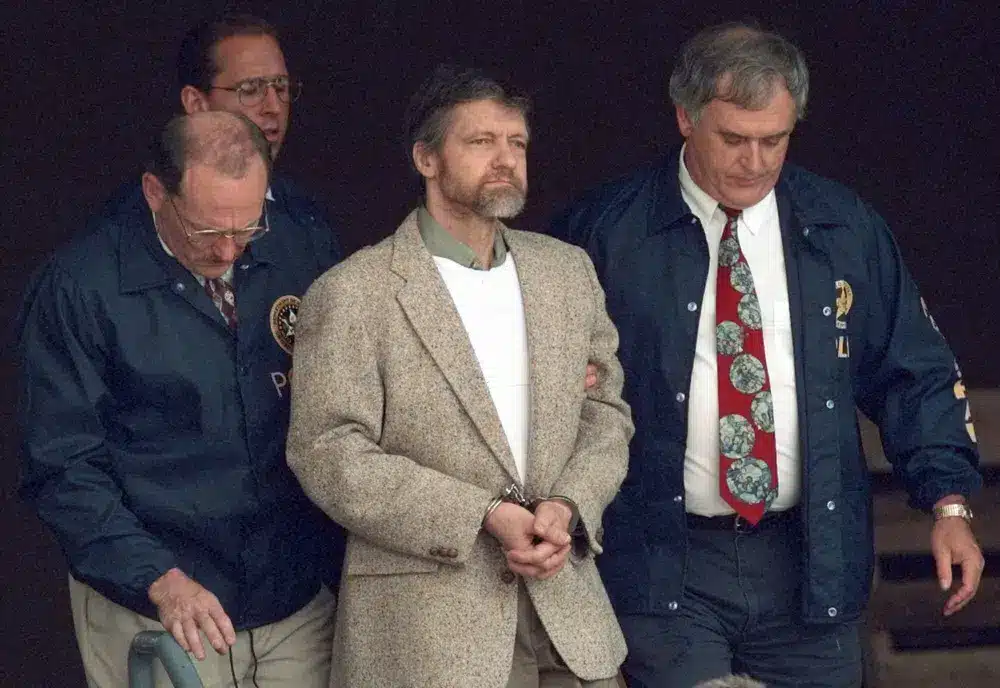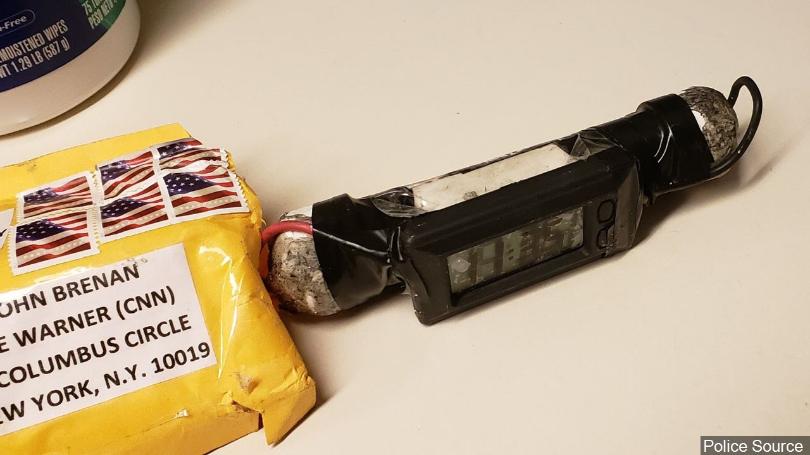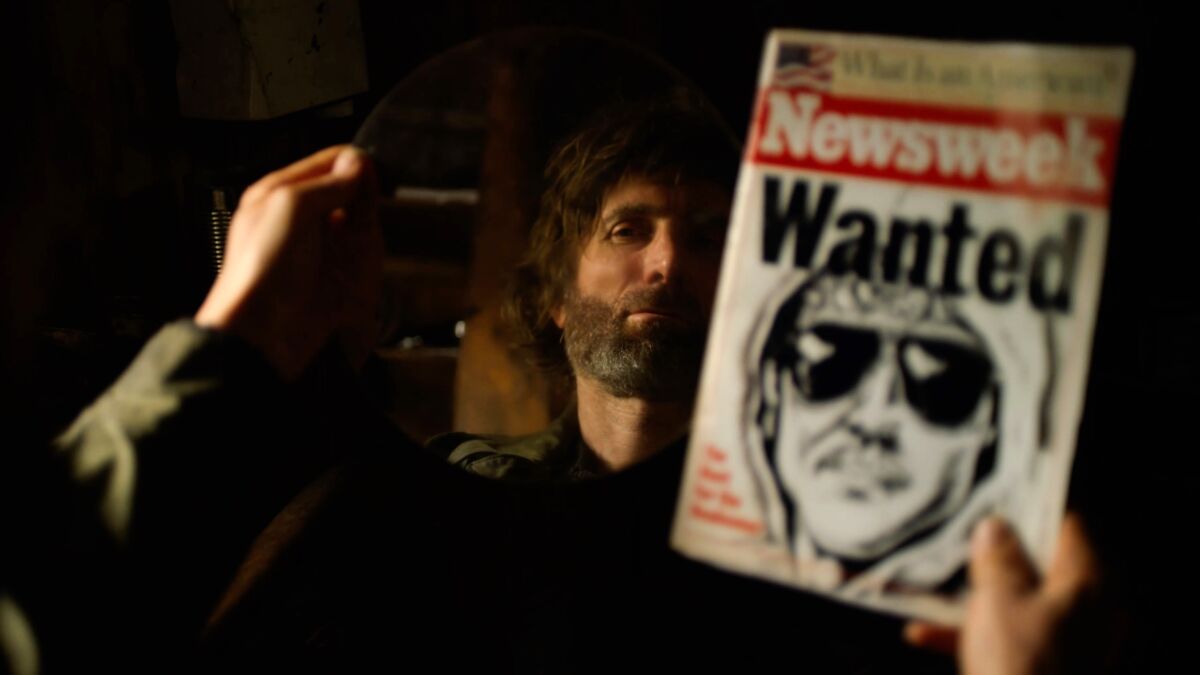News
Unabomber Ted Kaczynski Dies in Prison at 81

Unibomber Ted Kaczynski, a Harvard-educated mathematician who retired to a run-down cabin in the Montana woods and launched a 17-year bombing campaign that killed three people and injured 23 others, died Saturday. He was 81.
According to Kristie Breshears, a spokesperson for the federal Bureau of Prisons, Kaczynski died at the federal prison medical centre in Butner, North Carolina, after being labelled the “Unabomber” by the FBI. He was discovered unresponsive in his cell early Saturday morning and died at 8 a.m., she added. The reason of death was not immediately determined.
He had been incarcerated in the federal Supermax prison in Florence, Colorado, since May 1998, when he was convicted to four life terms plus 30 years for a terror campaign that had campuses around the country on edge. He admits to carrying out 16 explosions between 1978 and 1995, injuring several of his victims permanently.
Years before the Sept. 11 attacks and the anthrax mailing, the Unabomber’s lethal homemade explosives altered how Americans shipped goods and boarded flights, effectively shutting down air travel on the West Coast in July 1995.
In September 1995, he compelled The Washington Post and The New York Times to make the agonizing decision to publish his 35,000-word manifesto, “Industrial Society and Its Future,” which claimed modern culture and technology were contributing to a sense of impotence and alienation.
But that was his undoing. The tone of the book was recognised by Kaczynski’s brother, David, and David’s wife, Linda Patrik, who alerted the FBI, which had been searching for the Unabomber for years in the nation’s longest and most expensive manhunt.
In April 1996, authorities discovered him in a 10-by-14-foot (3-by-4-meter) plywood and tarpaper shack outside Lincoln, Montana, including journals, a coded diary, explosive materials, and two constructed bombs.
As an enigmatic criminal mastermind, the Unabomber drew admirers and similarities to Daniel Boone, Edward Abbey, and Henry David Thoreau.
But when he was revealed to be a wild-eyed recluse with long hair and a beard who spent Montana winters in a one-room cabin, Kaczynski struck many as a pitiful loner rather than a romantic anti-hero.
Even in his own notebooks, Kaczynski comes across as a bitter hermit driven by petty grievances rather than a devoted revolutionary.
“I certainly don’t claim to be an altruist or to be acting for the’good’ (whatever that is) of the human race,” he wrote on April 6, 1971. “I only act out of a desire for vengeance.”
Kaczynski was classified as a paranoid schizophrenic by a psychiatrist who interviewed him in prison.
“Mr. Kaczynski’s delusions are mostly persecutory in nature,” wrote Sally Johnson in a 47-page study. “The central themes involve his belief that he is being maligned and harassed by family members and modern society.”
Kaczynski despised the thought of being labelled as mentally ill, and when his lawyers attempted to use insanity as a defence, he attempted to fire them. When that didn’t work, he attempted to hang himself with his pants.
Rather than allowing his defence team to pursue an insanity defence, Kaczynski eventually pleaded guilty.
“I’m confident that I’m sane,” Kaczynski told Time in 1999. “I don’t have delusions or anything like that.”
He was unquestionably brilliant.
At the age of 16, Kaczynski skipped two grades to attend Harvard and had papers published in major mathematics journals. His explosives were meticulously tested and delivered in handcrafted oak boxes polished to remove any fingerprints. Later bombs had the “FC” abbreviation for “Freedom Club.”
He was dubbed the “Unabomber” by the FBI since his initial targets appeared to be colleges and airlines. An altitude-triggered bomb he delivered in 1979 detonated as planned aboard an American Airlines flight, injuring a dozen passengers.
Hugh Scrutton, the owner of a computer rental company, advertising executive Thomas Mosser, and forestry industry lobbyist Gilbert Murray were all assassinated by Kaczynski. Two days apart in June 1993, bombings injured California scientist Charles Epstein and Yale University computer expert David Gelernter.
Mosser was murdered at his North Caldwell, New Jersey, home on December 10, 1994, the day he was due to go tree-hunting with his family. Susan, his wife, discovered him severely injured by a hail of razor blades, pipes, and nails.
“He was moaning very softly,” she stated during Kaczynski’s sentence in 1998. “His right hand’s fingers were dangling. I took his left hand in mine. I informed him that assistance was on its way. I told him how much I adored him.”
Experts speculated that when Kaczynski increased his bombings and letters to journalists and scientists in 1995, he was resentful of the attention being afforded to Oklahoma City bomber Timothy McVeigh.
A threat to blow up a plane leaving Los Angeles before the end of the Fourth of July weekend disrupted air travel and mail delivery. Later, the Unabomber claimed it was a “prank.”
The Washington Post published the Unabomber’s manifesto at the request of federal authorities, after the bomber stated that if a national publication published his treatise, he would cease terrorism.
Patrik had had an uneasy feeling about her brother-in-law even before reading the manifesto, and she eventually got her husband to borrow a copy from the library. They took some of Ted Kaczynski’s letters to Patrik’s boyhood friend Susan Swanson, a private investigator in Chicago, after two months of arguing.
Swanson forwarded them to Clint Van Zandt, a former FBI behavioural science expert, whose analysis concluded that whoever authored them had also likely penned the Unabomber’s manifesto.
“It was a nightmare,” David Kaczynski, who admired his older brother as a boy, said in a 2005 lecture at Bennington College. “I was literally thinking,’My brother’s a serial killer, the most wanted man in America.'”
Swanson contacted the FBI through a business lawyer buddy, Anthony Bisceglie. During his prior tenure at the Justice Department, now-Attorney General Merrick Garland oversaw the investigation and prosecution.
David Kaczynski wanted his role to be kept private, but his identity was swiftly revealed, and Ted Kaczynski vowed never to forgive his younger brother. He ignored his letters, turned his back on him at court proceedings, and in a 1999 book draught, he called David Kaczynski as a “Judas Iscariot (who)… doesn’t even have enough courage to go hang himself.”
Ted Kaczynski was born in Chicago on May 22, 1942, the son of second-generation Polish Catholics — a sausage manufacturer and a housewife. He was in the school band, collected coins, and skipped sixth and eleventh grades.
His high school classmates thought he was strange, especially after he demonstrated to a school wrestler how to create a mini-bomb that exploded during chemistry class.
His Harvard classmates remembered him as a lonely, scrawny boy with bad personal hygiene and a room that smelled like sour milk, decaying food, and foot powder.
He acquired a position teaching maths at the University of California, Berkeley after finishing his PhD studies at the University of Michigan in Ann Arbour, but he found the work challenging and left abruptly. In 1971, he purchased a 112-acre plot of land approximately 4 miles (6 km) outside of Lincoln and constructed a cabin there with no heating, water, or electricity.
Living on a few hundred dollars a year, he learned to grow, hunt, create tools, and sew.
In the late 1970s, he left his Montana cabin to work with his father and brother at a foam rubber goods business north of Chicago. When a female supervisor abandoned him after two dates, he began writing derogatory limericks about her and wouldn’t stop.
Ted Kaczynski was fired by his brother, and he quickly returned to the wilderness to resume plotting his vindictive murdering rampage.
News
Britain Must Be Ready for War in 3 Years, Warns New Army Chief

The new head of the Army has stated that Britain must be prepared to fight a war within three years.
Gen Sir Roland Walker has issued a warning about a variety of risks in what he calls a “increasingly volatile” environment.
However, he stated that war was not inevitable and that the Army had “just enough time” to prepare to prevent conflict.
He stated that the Army’s fighting capacity would be doubled by 2027 and tripled by the end of the decade.
Gen Walker warned that the Britain was under threat from a “axis of upheaval” in his first speech as Prime Minister on Tuesday.
Among the primary concerns confronting the Britain in the next years, as noted by the general in a briefing, is an enraged Russia, which may seek vengeance on the West for helping Ukraine, regardless of who wins the war.
He stated: “It doesn’t matter how it finishes. I believe Russia will emerge from it weaker objectively – or completely – but still very, very dangerous and seeking some form of retaliation for what we have done to assist Ukraine.”
Britain’s Government Defence Review and Military Challenges
He also warned that China was determined to retake Taiwan, and Iran was likely to seek nuclear weapons.
He stated that the threats they posed may become particularly acute in the next three years, and that these countries had formed a “mutual transactional relationship” since the war in Ukraine, sharing weaponry and technology.
However, he stated that the path to conflict was not “inexorable” if the UK re-established credible land troops to assist its deterrent strategy for avoiding war.
In his speech, he described his force of slightly over 70,000 regular troops as a “medium-sized army” and made no direct call for additional resources or men.
However, he pushed the British Army to adapt swiftly, focussing on technology such as artificial intelligence and weaponry rather than numbers.
His ultimate goal is for the Army to be capable of destroying an opponent three times its size.
This would entail firing quicker and farther, he said, aided by lessons learnt from the Ukraine war.
The general’s speech at the Royal United Services Institute land warfare conference comes only one week after the government began a “root and branch” defence review to “take a fresh look” at the challenges facing the armed services.
Defence Secretary John Healey launched the assessment, describing the existing status of the armed forces as “hollowed-out” and stating that “procurement waste and neglected morale cannot continue”.
According to the most recent Ministry of Defence (MoD) numbers from April 2024, the Britain’s regular Army forces total 75,325 troops (excluding Gurkhas and volunteers).
That figure has been declining in recent years, as recruiting has failed to match retention. The previous Conservative administration lowered the planned headcount from 82,000 to 72,500 by 2025.
Members of the NATO military alliance have agreed to spend at least 2% of GDP on defence by 2024, but several countries are unlikely to fulfil this goal.
The Britain presently spends 2.3% of its GDP on defence. Prime Minister Sir Keir Starmer has previously stated that the defence review will include a “roadmap” for increasing this to 2.5%, however he has yet to provide a date for this promise.
Source: BBC
News
Katie Ledecky Hopes For Clean Races At Paris Olympics In The Aftermath Of The Chinese Doping Scandal

PARIS — Katie Ledecky is looking for clean Olympic races. On Wednesday, Hope had pretty much reached her limit.
The American swimmer hopes to add to her six gold medals as she competes in the 400, 800, and 1,500 meters at the Paris Games. Her program starts with the heavy 400 on Saturday, featuring Ariarne Titmus and Summer McIntosh.

Katie Ledecky | ESPN Image
Katie Ledecky Hopes For Clean Races At Paris Olympics In The Aftermath Of The Chinese Doping Scandal
The 27-year-old Katie is competing in her fourth Summer Olympics, but the first since a doping scandal involving almost two dozen Chinese swimmers who tested positive for a banned chemical before the Tokyo Games — yet were permitted to compete with no consequences. The controversy has raised serious worries regarding the effectiveness of anti-doping initiatives.

Katie Ledecky | Vogue Image
“I hope everyone here is going to be competing clean this week,” Ledecky claimed. “But what truly counts is, were they training cleanly? Hopefully this has been the case. Hopefully, there has been worldwide testing.”
The International Olympic Committee has expressed concern over the ongoing US investigation into possible doping by Chinese swimmers. While awarding the 2034 Winter Olympics to Salt Lake City on Wednesday, the IOC urged Utah officials to do whatever they could to stop the FBI investigation.
“I think everyone’s heard what the athletes think,” Katie added. “They seek transparency. They want more answers to the remaining questions. At this point, we are here to race. We are going to race whoever is in the lane next to us.
“We are not paid to conduct the tests, so we trust those who follow their regulations. That applies both today and in the future.

Katie Ledecky | ESPN Image
Katie Ledecky Hopes For Clean Races At Paris Olympics In The Aftermath Of The Chinese Doping Scandal
SOURCE | AP
News
London Heatwave Alert: High Temperatures Set to Soar to 29C Next Week

As the summer holidays begin, London may experience an official heatwave with temperatures reaching up to 29 degrees Celsius.
The Met Office predicts a long period of sunny and dry weather for London after a soggy spring and summer.
After a cloudy day on Saturday, temperatures are expected to reach 27C on Sunday, with lots of sunlight.
On Monday and Tuesday, temperatures are forecast to peak at 29 degrees Celsius. Monday is forecast to offer more sunlight, while Tuesday may see some gloomy weather.
Temperatures are expected to remain in the high 20s next week, with lows of approximately 18C.
According to the Met Office, a heatwave is “an extended period of hot weather relative to the expected conditions of the area at that time of year, which may be accompanied by high humidity.”
In the United Kingdom, a heatwave is proclaimed when daily temperatures meet or surpass a certain level for at least three consecutive days.
In London, the heatwave threshold is 28 degrees Celsius.
The Met Office reported that the UK is experiencing hotter and wetter weather on average due to climate change.
The UK experienced its warmest May and April on record this year, despite damp and dismal conditions in many areas.
According to the Met Office’s State Of The UK Climate 2023 report published on Thursday, the UK experienced historic levels of extreme weather last year.
In the United Kingdom, 2023 was the second warmest year on record, bringing storms, flooding, strong heatwaves, and rising sea levels; only 2022 was warmer.
It was 0.8°C higher than the average from 1991 to 2020, and 1.66°C higher than the 1961 to 1990 average.
However, 2023 will be a “cool year” in comparison to 2100, based on the planet’s warming trajectory.
The government’s plan to adapt to the hazards presented by climate change is currently being challenged in the High Court by campaigners who allege the Tory administration’s July 2023 National Adaptation Programme (NAP) fails to adequately address 61 concerns.
Source: The Standard
-
World2 weeks ago
Former President Trump Survives Being Shot at Pennsylvania Rally
-
Tech4 weeks ago
Huawei Launches 5G-A Pioneers Program at MWC Shanghai 2024: Paving the Way for a Connected Future
-
Sports4 weeks ago
NBA Draft: Kyle Filipowski Withdraws Unexpectedly From The First Round
-
Tech4 weeks ago
ChatGPT Answers Undiscovered Questions and Outperforms Students.
-
News4 weeks ago
US Supreme Court Rejects Drug Deal that Protects the Sackler Family
-
Business4 weeks ago
Free Speech And Digital Rights Groups Argue TikTok Law Would Infringe On The First Amendment





















